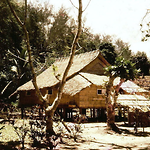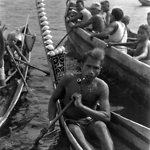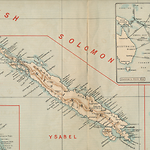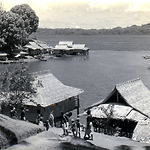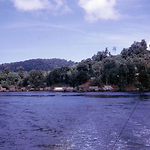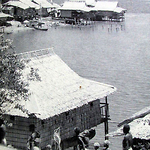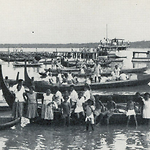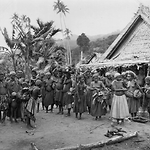Place: Isabel Island
- Alternative Names
- Santa Ysabel or Santa Isabel Island
- Ysabel Island
Details
Santa Isabel or Santa Ysabel Island is today usually known as Isabel Island. It lies west of Malaita, north of Guadalcanal, east of the New Georgia Islands and south of Choiseul. Isabel Island is the largest island in what is now Isabel Province, with San Jorge a substantial contiguous island in the south and several smaller islands extending out around Kia in the north (Malakobi, Bates, Ghaghe, Barora Fa, Baroar Ite, Nidero and Omona). The highest point is Mt. Kubonitu (Sasari at 1,220 metres) and Isabel is 209 kilometres long (the longest of the geographical Solomon Islands after Bougainville) and thirty-two kilometres across at its widest point. Thousand Ships Bay in the south, between San Jorge (Moumolu Naunitu) and Isabel, is as commodious as its name suggests. The island was at one time known as Bugotu (Mbughotu) the name of the people living in the south. (Horton 1965, 13)
The Mendaña expedition first sighted the island on 9 February 1568, naming it Santa Ysabel after the saint's day on which they left Callao, Peru. The expedition recorded Bilebau-Arra as the local name for the island. Mendaña and his party spent some months on the island, building a small vessel to use to survey the Solomon Islands. Mendaña observed 'chiefs' who commanded warring and trading expeditions in western Isabel. These were probably Kia leaders who had close alliances with groups in the Roviana Lagoon in New Georgia through kin, trade and war alliances, a consequence of which was attacks on the Bugotu people of southern Isabel. There was never a local name for the whole island. (White 1991, 83-84; Aswani and Sheppard 2003)
The next foreign visitors did not reach the island until 1769, when French explorer Jean-François-Marie de Surville rediscovered Isabel at Port Praslin, near present-day Kia. Then, beginning in the 1820s, whaling and trading ships sailed past and occasionally contacted the people of Isabel in their search for whales, turtle shell and bêche-de-mer. The primary trade locations were near Kia (Port Praslin) and the Bugotu area. (White 1991a, 84-85; Bennett 1987, 350-355)
During the second half of the nineteenth century headhunters (q.v.) from New Georgia continued to maraud around Isabel Island, taking captives and trophy heads as part of ritual practices. (McKinnon 1975; Bennett 1987, 35, 68, 88, 91, 95, 113; Aswani 2000a) An upward spiral of trading and raiding occurred, partly fuelled by the iron and steel tools and guns traded to New Georgia, which increased the ability of the people to perpetrate warfare on the surrounding islands. The people of Kia (on the main island but situated on a deepwater channel cutting through a sprawl of islets at the northern end of Isabel) had long had a close tactical relationship with the people of Roviana, New Georgia and most spoke the Roviana language as well as their own. A similar close relationship developed with the Bugotu people in the south, who were able to dominate the Cheke Holo language speakers in the centre of the island and to depopulate areas of the island. The east coast between Kia and the Maringe Lagoon was almost deserted since the people had moved inland for safety. These raids caused people to leave their ancestral lands to seek temporary shelter far inland on ridges or in the southeast of the island in the area controlled by the Bugotu people. There was a large fortified community in the central mountains at Khakatio, and the Bugotu leaders Bera (q.v.) and Soga (q.v.) gained prestige and enhanced their power by accommodating refugees. (Allan 1989, 60; White 1991, 87-90) The people in the south had exchange and raiding links with north Malaita and Nggela, and those in the north with Choiseul and New Georgia, mainly with Roviana Lagoon. (Horton 1965, 48)
European traders did attempt to establish themselves on Isabel but none managed to do so permanently during the nineteenth century. One early castaway, George Hezekiah Spurgeon from the whaler Georgia, was put ashore because it was believed he had leprosy. (Horton 1965, 144-149)
Christianity's permanent presence was brought about by the Anglican Melanesian Mission (q.v.). Earlier, in 1845, the Marist Catholics (q.v.) had tried to settle on Isabel but Bishop Jean-Baptiste Epalle (q.v.) was killed upon landing and the endeavour was abandoned. Anglican Bishop Patteson (q.v.) visited Bughotu on the Southern Cross (q.v.) in 1861 and then and throughout the decade was able to persuade some young men to leave for training in New Zealand and on Norfolk Island. Catechists trained by the Melanesian Mission began to establish a foothold. Wadrokal (q.v.), a Loyalty Islander, managed in 1874 to establish a school at Nuro in Bugotu. There was friction with chief Bera and little progress was made until after Bera's death in 1883.
The first European missionary to take up residence was Anglican Alfred Penny, at Bugotu in 1883, who managed to incorporate the Cheke Holo refugees into his congregation. The final irrevocable advance was the conversion of Bera's successor Monilaws Soga, who brought his followers with him in a mass conversion in 1889. Clearly, Soga saw the Mission as a source of power and knowledge, and by allying himself with it he was able to extend his influence and form alliances all over the island. One such alliance was with Rona, the Kia leader, and the pair made a truce to stop the Kia alliance with the Roviana headhunters against Bugotu. Soga also established an early alliance with groups on Vella Lavella. The advance of Christianity was thus allied to the diplomatic skills and coercive powers of Soga and other leading chiefs such as Rona and Figrima from Khakatio. Dr Henry Palmer Welchman (q.v.) served on Isabel from 1890-1901 and did much to stabilise the success of Anglicanism on the island. He created what was close to a theocracy there early in the twentieth century. (White 1991a, 85-102; White 1991b; Bennett 1987, 112)
Isabel Island was claimed between 1886 and 1899 as part of German New Guinea (q.v.) but then transferred to the British Protectorate. Originally attached to Western District, the first District Officer was appointed there in 1918. The District Station was at Tatamba (Tunnibulli), a natural harbour on the southeast coast. D. C. Horton, District Officer there in 1937-1938, reported that he ran the island with the help of several Headmen, a corporal and five police, a prison warder and an auxiliary schooner of around 15 tons. The Russell Islands were included in its administrative area. (Horton 1965, 33-70)
Labour recruiters took 208 labourers from Isabel to Queensland between the 1870s and 1903, and 1,211 labourers to Fiji between the 1870s and 1911. (Price and Baker 1976; Siegel 1985) Smaller numbers would have been recruited by the Germans for plantations in German New Guinea or Samoa, or by the French to New Caledonia. Between 1913 and 1940, 669 Isabel men went to work on plantations within the Protectorate. (Shlomowitz and Bedford 1988) The island's population was low, only 4,100 at the first census in the 1930s. Isabel people began to produce their own copra, and the Anglican Mission assisted them by transporting it to Tulagi on the Southern Cross. This helped them to pay the Head Tax imposed from 1922 onward. There were moves in the 1930s to establish stores on Isabel and by 1936 there were five European-owned stores and one Chinese-owned one. (Bennett 1987, 251-252) There were several small plantations on the island before the Second World War, at Ravihana (Kia), Papatura, Suavanao, Ghatere, Estrella Bay, Huhurangi, Ghojoruru (Gozoruru), Goronga, Guguha, Hivo, Fera, Haevo, Floakora, Papari, and Maranatabu, as well as one on San Jorge Island. (Horton 1965, 144-149; Bennett 1987, 251; Golden 1993, 311-312)
The Chair and Rule movement (q.v.) emerged on Isabel in 1939, partly based on the Anglican system of government there. It was aided and abetted by Rev. Richard Fallowes (q.v.), who helped Paramount Chief Lonsdale Gado to organise three big meetings, at Mbughotu on Isabel and on Savo and Nggela, the latter with participants from Malaita, Guadalcanal, Makira and the Russell Islands. The meetings produced a list of grievances against the government. Fallowes was deported and the movement faded away.
The Japanese established a garrison on Isabel during the Second World War with a seaplane base at Rekata Bay. The Allies considered creating a major base there to help retake Rabaul, but decided that Isabel was not important enough strategically. Isabel was finally cleared of Japanese during the allies move through the Western Solomons. (Cline and Michel 2002, 247-248)
In 1956 Isabel was transferred to Central District, and in 1978 it became a separate Province. The administrative headquarters was established at Buala on the southeast coast, consisting of Jejevo station where the Church of Melanesia has its diocesan headquarters, and Buala village, which became the centre for provincial administration. The town is close to the airfield on Fera Island.
Related entries
Published resources
Books
- Allan, Colin H., Solomons Safari, 1953-58 (Part I), Nag's Head Press, Christchurch, 1989. Details
- Bennett, Judith A., Wealth of the Solomons: A History of a Pacific Archipelago, 1800-1978, University of Hawai'i Press, Honolulu, 1987. Details
- Cline, Dennis, and Michel, Bob, Skeeter Beaters: Memories in the South Pacific, 1941-1945, DeForest Press, Elk River, Minn., 2002. Details
- Golden, Graeme A., The Early European Settlers of the Solomon Islands, Graeme A. Golden, Melbourne, 1993. Details
- Horton, Dick C., The Happy Isles: A Diary of the Solomons, Originally published: 1965, Heinemann, London, 1965. Details
- White, Geoffrey M., Identity Through History: Living Stories in a Solomon Islands Society, Cambridge University Press, Cambridge, 1991. Details
Edited Books
- Aswani, Shankar (ed.), Journal of the Polynesian Society: Essays on Head-hunting in the Western Solomon Islands, vol. 109, 2000a. Details
Journal Articles
- Aswani, Shankar, and Sheppard, Peter, 'The Archaeology and Ethnohistory of Exchange in Precolonial and Colonial Roviana: Gifts, Commodities, and Inalienable Possessions', Current Anthropology, vol. 44, Supplement, 2003, pp. S51-S78. Details
- McKinnon, J.M., 'Tomahawks, Turtles and Traders: A Reconstruction in the Circular Causation of Warfare in the New Georgia Group', Oceania, vol. 45, no. 4, 1975, pp. 290-307. Details
- McKinnon, J.M., 'Tomahawks, Turtles and Traders: A Reconstruction in the Circular Causation of Warfare in the New Georgia Group', Oceania, vol. 45, no. 4, 1975, pp. 290-307. Details
- Price, Charles, and Baker, Elizabeth, 'Origins of Pacific Island Labourers in Queensland, 1863-1904: A Research Note', Journal of Pacific History, vol. 11, no. 1-2, 1976, pp. 106-121. Details
- Siegel, Jeff, 'Origins of Pacific Island Labourers in Fiji', Journal of Pacific History, vol. 20, no. 2, 1985, pp. 42-54. Details
- White, Geoffrey M., 'Village Videos and Custom Chiefs: The Politics of Tradition', Cultural Survival Quarterly, vol. 15, no. 2, 1991, pp. 56-60. Details
Images
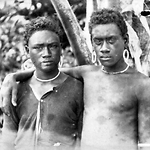
- Title
- "Chums" -Two Boys of Bugotu, Isabel Island (Solomon Islands)
- Type
- Image
- Date
- 1906
- Source
- Anglican Church of Melanesia
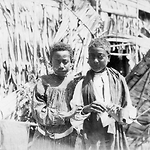
- Title
- "Mates" -Two Bugotu Girls, Isabel Island (Solomon Islands)
- Type
- Image
- Date
- 1906
- Source
- Anglican Church of Melanesia
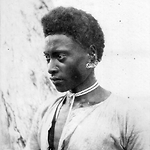
- Title
- A Bugotu Schoolboy (Vignette), North-East Coast, Isabel Island (Solomon Islands)
- Type
- Image
- Date
- 1906
- Source
- Anglican Church of Melanesia
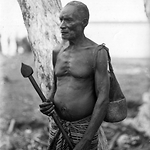
- Title
- A Chief at Buala (3/4 Fig.), Isabel Island (Solomon Islands)
- Type
- Image
- Date
- 1906
- Source
- Anglican Church of Melanesia
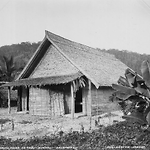
- Title
- All Saints' Church, Mara-na-tabu Island, Isabel Island (Solomon Islands)
- Type
- Image
- Date
- 1906
- Source
- Anglican Church of Melanesia
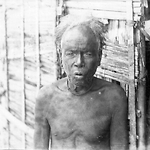
- Title
- An Old Bugotu Man-Vigt. Full-face, Isabel Island (Solomon Islands)
- Type
- Image
- Date
- 1906
- Source
- Anglican Church of Melanesia
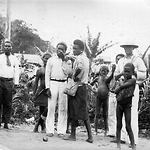
- Title
- Bishop Wilson among the Buala Children, North-East Coast, Isabel Island (Solomon Islands)
- Type
- Image
- Date
- 1906
- Source
- Anglican Church of Melanesia
.png)
- Title
- Bugotu Boys at Mara-na-tabu (Group) , Isabel Island (Solomon Islands)
- Type
- Image
- Date
- 1906
- Source
- Anglican Church of Melanesia
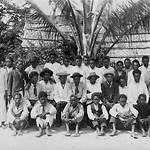
- Title
- Butotu Teachers-Group at Mara-na-tabu Island, Isabel Island (Solomon Islands)
- Type
- Image
- Date
- 1906
- Source
- Anglican Church of Melanesia
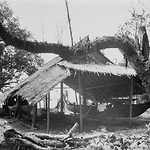
- Title
- Canoe House, Regi, Isabel Island (Solomon Islands)
- Type
- Image
- Date
- 1906
- Source
- Anglican Church of Melanesia
.png)
- Title
- Chief at Sepi, Isabel Island (Solomon Islands)
- Type
- Image
- Date
- 1906
- Source
- Anglican Church of Melanesia
.png)
- Title
- Chief's canoe house, Sepi, Isabel Island (Solomon Islands)
- Type
- Image
- Date
- 1906
- Source
- Anglican Church of Melanesia
.png)
- Title
- Chief's House at Sepi, Isabel Island (Solomon Islands)
- Type
- Image
- Date
- 1906
- Source
- Anglican Church of Melanesia
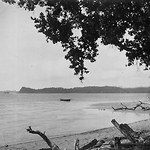
- Title
- Coast of Bugotu, looking east from Regi, Isabel Island (Solomon Islands)
- Type
- Image
- Date
- 1906
- Source
- Anglican Church of Melanesia
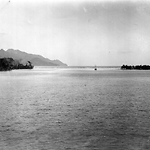
- Title
- Cockatoo Anchorage, Bugotu, Isabel Island (Solomon Islands)
- Type
- Image
- Date
- 1906
- Source
- Anglican Church of Melanesia
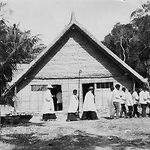
- Title
- Dedication of St Luke's, Mindoru, Isabel Island (Solomon Islands)
- Type
- Image
- Date
- 1906
- Source
- Anglican Church of Melanesia
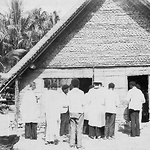
- Title
- Dedication of St Luke's, Mindoru, Isabel Island (Solomon Islands)
- Type
- Image
- Date
- 1906
- Source
- Anglican Church of Melanesia
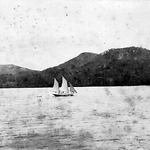
- Title
- Dr Welscman's boat Ruth off Pirihadi Bay, Isabel Island (Solomon Islands)
- Type
- Image
- Date
- 1906
- Source
- Anglican Church of Melanesia
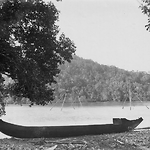
- Title
- Fishery at Pirihadi Bay, Isabel Island (Solomon Islands)
- Type
- Image
- Date
- 1906
- Source
- Anglican Church of Melanesia
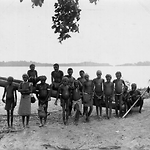
- Title
- Group of Boys at Buala, Isabel Island (Solomon Islands)
- Type
- Image
- Date
- 1906
- Source
- Anglican Church of Melanesia
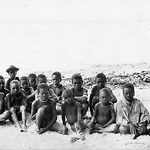
- Title
- Group of Buala boys, Isabel Island (Solomon Islands)
- Type
- Image
- Date
- 1906
- Source
- Anglican Church of Melanesia
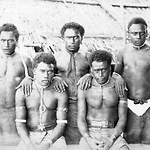
- Title
- Group of Bugotu Men, Isabel Island (Solomon Islands)
- Type
- Image
- Date
- 1906
- Source
- Anglican Church of Melanesia
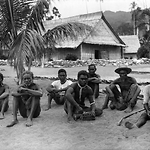
- Title
- Group of men at Buala, Isabel Island (Solomon Islands)
- Type
- Image
- Date
- 1906
- Source
- Anglican Church of Melanesia
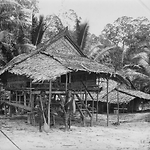
- Title
- House, Regi, Isabel Island (Solomon Islands)
- Type
- Image
- Date
- 1906
- Source
- Anglican Church of Melanesia
.png)
- Title
- In Mindoru village, Isabel Island (Solomon Islands)
- Type
- Image
- Date
- 1906
- Source
- Anglican Church of Melanesia
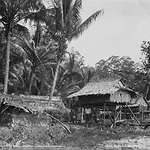
- Title
- In Regi Hamlet, Isabel Island (Solomon Islands)
- Type
- Image
- Date
- 1906
- Source
- Anglican Church of Melanesia
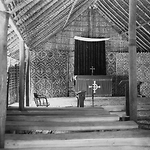
- Title
- Inside All Saint's Church, Mara-na-tabu Island, Isabel Island (Solomon Islands)
- Type
- Image
- Date
- 1906
- Source
- Anglican Church of Melanesia
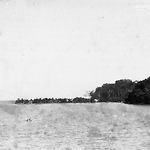
- Title
- Island of Mara-na-tabu, from South, Isabel Island (Solomon Islands)
- Type
- Image
- Date
- 1906
- Source
- Anglican Church of Melanesia
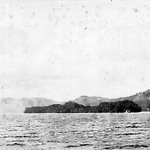
- Title
- Island of Mara-na-tabu, from West , Isabel Island (Solomon Islands)
- Type
- Image
- Date
- 1906
- Source
- Anglican Church of Melanesia
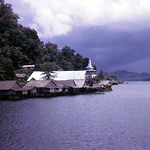
- Title
- Kia village including Anglican church, Isable Island, 1970
- Type
- Image
- Date
- 1970
- Source
- Brian Taylor
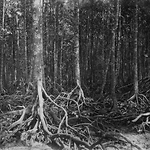
- Title
- Mangrove Swamp at Regi, Isabel Island (Solomon Islands)
- Type
- Image
- Date
- 1906
- Source
- Anglican Church of Melanesia
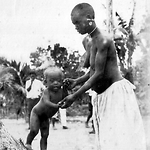
- Title
- Mother and Child, Buala , North-East Coast, Isabel Island (Solomon Islands)
- Type
- Image
- Date
- 1906
- Source
- Anglican Church of Melanesia
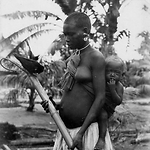
- Title
- Mother and child, Isabel Island (Solomon Islands)
- Type
- Image
- Date
- 1906
- Source
- Anglican Church of Melanesia
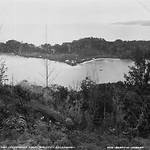
- Title
- Panorama Mara-na-tabu Island, Isabel Island (Solomon Islands)
- Type
- Image
- Date
- 1906
- Source
- Anglican Church of Melanesia
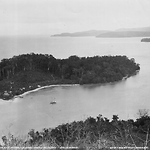
- Title
- Panorama showing Settlement at Mara-na-tabu Island, Isabel Island
- Type
- Image
- Date
- 1906
- Source
- Anglican Church of Melanesia
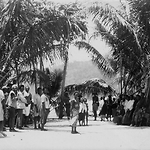
- Title
- People waiting for Dr Welchman, Isabel Island Solomon Islands)
- Type
- Image
- Date
- 1906
- Source
- Anglican Church of Melanesia
.png)
- Title
- Piribadi Bay from above Mindoru, Isabel Island (Solomon Islands)
- Type
- Image
- Date
- 1906
- Source
- Anglican Church of Melanesia
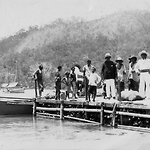
- Title
- Scene at Jetty, Mara-na-tabu , Isabel Island (Solomon Islands)
- Type
- Image
- Date
- 1906
- Source
- Anglican Church of Melanesia
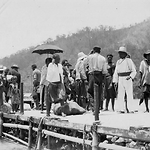
- Title
- Scene at Jetty, Mara-na-tabu, Isabel Island (Solomon Islands)
- Type
- Image
- Date
- 1906
- Source
- Anglican Church of Melanesia
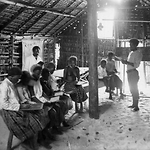
- Title
- School at Dr. Welshman's, Mara-na-tabu Island, Isabel Island (Solomon Islands)
- Type
- Image
- Date
- 1906
- Source
- Anglican Church of Melanesia
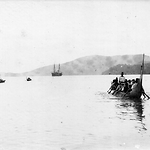
- Title
- Southern Cross at anchor off Maranatabu, Isabel Island (Solomon Islands)
- Type
- Image
- Date
- 1906
- Source
- Anglican Church of Melanesia
.png)
- Title
- St. George's Island and Thousand Ships Bay, Isabel Island (Solomon Islands)
- Type
- Image
- Date
- 1906
- Source
- Anglican Church of Melanesia
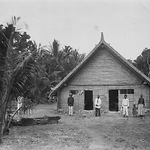
- Title
- St. Luke's Church, Mindoru, Isabel Island (Solomon Islands)
- Type
- Image
- Date
- 1906
- Source
- Anglican Church of Melanesia
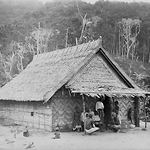
- Title
- Teacher's house at Buala, Isabel Island (Solomon Islands)
- Type
- Image
- Date
- 1906
- Source
- Anglican Church of Melanesia
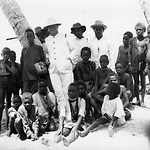
- Title
- The captain of the Souther Cross and a group of people, Isabel Island (Solomon Islands)
- Type
- Image
- Date
- 1906
- Source
- Anglican Church of Melanesia
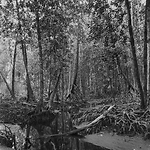
- Title
- The Haunt of the Crocodile-Regi, Isabel Island (Solomon Islands)
- Type
- Image
- Date
- 1906
- Source
- Anglican Church of Melanesia
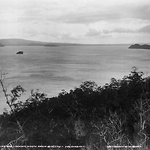
- Title
- Thousand Ships Bay, from Bugotu, Isabel Island (Solomon Islands)
- Type
- Image
- Date
- 1906
- Source
- Anglican Church of Melanesia
.png)
- Title
- View from Mara-na-tabu Island from the Jetty, Isabel Island (Solomon Islands)
- Type
- Image
- Date
- 1906
- Source
- Anglican Church of Melanesia
.png)
- Title
- View from Mara-na-tabu Island from the Jetty, Isabel Island (Solomon Islands)
- Type
- Image
- Date
- 1906
- Source
- Anglican Church of Melanesia
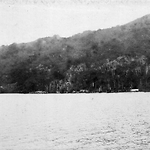
- Title
- Village at Buala from Anchorage, North-East Coast, Isabel Island (Solomon Islands)
- Type
- Image
- Date
- 1906
- Source
- Anglican Church of Melanesia
.png)
- Title
- Village of Mindoru, Pirihadi Bay, Isabel Island (Solomon Islands)
- Type
- Image
- Date
- 1906
- Source
- Anglican Church of Melanesia
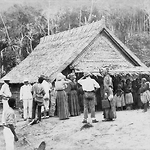
- Title
- Visitors from Southern Cross at Buala, North-East Coast, Isabel Island (Solomon Islands)
- Type
- Image
- Date
- 1906
- Source
- Anglican Church of Melanesia
